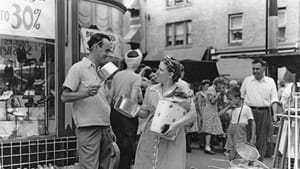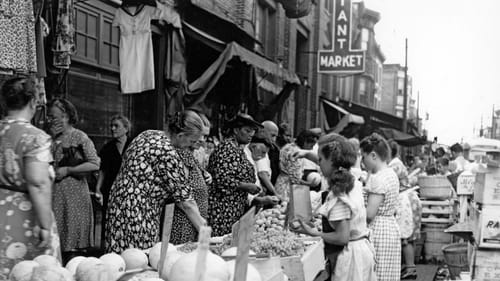Stay in the Loop
BSR publishes on a weekly schedule, with an email newsletter every Wednesday and Thursday morning. There’s no paywall, and subscribing is always free.
A bridge to Italy
The Italian Legacy in Philadelphia: History, Culture, People, and Ideas, edited by Andrea Canepari and Judith Goode

Philadelphia’s Italian heritage is like savory red gravy bubbling in a South Philadelphia kitchen—more complex than it appears. In their book The Italian Legacy in Philadelphia: History, Culture, People, and Ideas, editors Andrea Canepari and Judith Goode blend a chorus of voices to chronicle a connection that predates the nation.
Canepari, currently Italian ambassador to the Dominican Republic, was Italy’s consul general to Philadelphia from 2013 to 2017. While here, he founded Ciao Philadelphia, an event series organized with civic, academic, business, and arts leaders to display Italian and Italian American contributions to the region’s international character.
Ciao Philadelphia grew from Canepari’s observation that young Italian Americans, while intimately connected to their heritage in popular culture and family traditions, “did not feel personally connected to other internationally renowned dimensions of their Italianity such as art, science, design, opera, architecture, and fashion.” The Italian Legacy in Philadelphia caps that effort with interdisciplinary perspectives and a wealth of illustrations.
Goode, co-editor and Temple University professor emerita of anthropology and urban studies, is an authority on Philadelphia’s postwar development, with particular emphasis on South Philadelphia. In addition to writing several entries, she organized the book’s 40 essays around four key eras in city history.
From Madison to the Academy of Music
There’s a lot to explore, and no matter how knowledgeable, every reader will find a surprise or two. Temple’s Stephen A. Willier surveys Italian contributions to opera and instrumental music in an essay that cradles a spectacular center-stage photograph taken at the Academy of Music. Deep in a discussion of the musicians who graced local stages, the turn of a page delivers a breathtaking view of crimson tiers and twinkling lights that is usually seen only by performers.
University of Pennsylvania professor William B. Ewald introduces us to perhaps the most important Italian we’ve never heard of: Cesare Beccaria, whose legal philosophy influenced America’s founding generation. Beccaria, an 18th-century criminologist and legal reformer, “was one of the first to argue that laws must be clear, public, and intelligible to the common people [and for] a total abolition of the death penalty, ” Ewald says. Beccaria’s writing was studied by, among others, James Madison, principal author of the US Constitution.
Carmen Croce of St. Joseph’s University traces how Jesuit priests enhanced religious and academic development here, founding St. Joseph’s University, St. Joseph’s Preparatory School, and in 1733, Old St. Joseph’s Church, the city’s first Roman Catholic parish. Croce links the order’s intellectual tradition to American liberty, writing, “…with the Jesuits came libraries, scientific instruments, and an appreciation of art, science, music, theater, and culture—the very treasures that distinguished Philadelphia in the colonial era.”

Italian art at home and abroad
As the 19th century began, Philadelphia was no longer the nation’s capital nor its economic heart. Yet the city was becoming a manufacturing center and expanding geographically. A wealthy class was growing, and for cultural polish, elites set off on what became known as “the Grand Tour.”
According to Lisa Colletta of the American University of Rome, “The aim was to acquire classical learning, but one was obliged to retain a healthy skepticism toward the Old World because European culture was educational, but morally perilous.” On their return, the travelers invested time and treasure in home-grown institutions, spurred by a desire to democratize access to culture.
Ann Blair Brownlee, Penn Museum associate curator, tells the story of department-store magnate John Wanamaker, who in 1905 gifted Penn Museum bronze reproductions of artifacts from Pompeii and Herculaneum, so inspired was he by the sites suspended in time by the eruption of Mount Vesuvius in 79 CE.
Philadelphia Museum of Art benefitted from Italian art acquired by attorney John G. Johnson in his travels. According to Jennifer A. Thomson, curator of European painting and sculpture and the Johnson Collection, the bequest of more than 1,200 paintings, sculptures, and other objects “gave Philadelphia an Italian art collection rivaling that of many European cities.”
The South Philly connection
Between 1890 and 1920, more than 60,000 Italians settled in Philadelphia, but immigration laws soon tightened, driven by anti-immigrant sentiment, Italy’s post-World War I turn toward fascism, and the Great Depression.
Italians lived in South Philadelphia even before immigration peaked, explains Jeffrey A. Cohen of Bryn Mawr College. Newly arrived Italians often rented housing built for earlier Irish immigrants, and shoehorned new housing into existing gaps to accommodate “complex constellations of relatives and boarders … on well-traveled streets, the first-floor front was easily adapted to commerce, with a second door and a shop window.” The original core area for Italian immigrants ran from Christian to Carpenter, between 7th and 9th Streets.
Goode discusses the resiliency of South Philadelphia’s Italian identity. Noting the section’s history as an immigrant gateway, she says Italians made the congested neighborhood their own through institutions of daily life that enshrined the area as a touchstone even as Italians were replaced by immigrants from other lands.
Ethnic parishes were created, including St. Mary Magdalen de Pazzi in 1853, the first Italian national parish in the nation. Italian-owned businesses provided goods for Italian households; Italian-language newspapers provided information and a link to home; while banks and mutual-aid associations arose for financial support.
Food and architecture
Foodways strengthened Italian identity. Goode writes about the “social glue” of shared meals, gravy-making, and growing figs for drying. Italians resisted adopting American foods, shopping in what the city officially named the “Ninth Street Curbside Market” in 1915. Ironically, Goode explains, the area’s more common title, “Italian Market,” was not formalized until 2009, by which time many other new immigrants shared the space.
In the 19th and 20th centuries, Italian immigrants and their descendants continued to shape, and to be shaped by, Philadelphia. William R. Valerio of Woodmere Art Museum highlights how nascent artists and artisans in the community received encouragement and training from local institutions such as Fleisher Art Memorial, the Pennsylvania Academy of Fine Arts, DaVinci Art Alliance, and Philadelphia’s public schools, which provided art instruction.
“This was a period of both intense immigration from Italy and ambitious architectural growth and civic aggrandizement in Philadelphia,” Valerio writes, “with attendant opportunities for artists, including stonecutters, stained-glass makers, ironworkers, and decorative painters.”
Inquirer architecture critic Inga Saffron provides her shortlist of Philadelphia buildings which, while not necessarily well known, are “Italian to their core,” from corner banks to exquisite churches, to a little-known replica of Venice’s Bridge of Sighs—hidden in an alleyway behind the Cast Iron building, once home to Lit Brothers department store.
“Living bridges”
From architectural echoes, inspiring art, and elevating music, to haute and home cuisine, intellectual exchanges, commercial links, and semesters abroad, Italy and Philadelphia benefit mutually from what Canepari calls “living bridges”: people on both sides of the Atlantic who know home is sensibility, as well as geography.
What, When, Where
The Italian Legacy in Philadelphia: History, Culture, People, and Ideas. Edited by Andrea Canepari and Judith Goode. Philadelphia: Temple University Press, 2021. 424 pages, hardcover; $50.00. Get it from Temple University Press.
Sign up for our newsletter
All of the week's new articles, all in one place. Sign up for the free weekly BSR newsletters, and don't miss a conversation.
